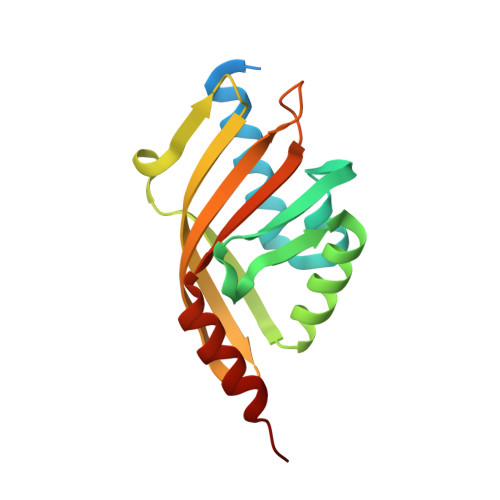Molecular basis for the unusual ring reconstruction in fungal meroterpenoid biogenesis
Mori, T., Iwabuchi, T., Hoshino, S., Wang, H., Matsuda, Y., Abe, I.(2017) Nat Chem Biol 13: 1066-1073
- PubMed: 28759016
- DOI: https://doi.org/10.1038/nchembio.2443
- Primary Citation of Related Structures:
5WQF, 5WQG, 5WQH, 5WQI, 5X9J, 5X9K - PubMed Abstract:
Trt14 from Aspergillus terreus is involved in unusual skeletal reconstruction during the biosynthesis of the fungal meroterpenoid terretonin. Detailed in vitro characterization revealed that this novel multifunctional enzyme catalyzes not only the D-ring expansion via intramolecular methoxy rearrangement, but also the hydrolysis of the expanded D-ring. The X-ray crystal structures of Trt14, in complex with substrate or product, and two Trt14 homologs, AusH and PrhC from Aspergillus nidulans and Penicillium brasilianum, respectively, indicated similar overall structures to those of the NTF2-like superfamily of enzymes, despite lacking sequence and functional similarities. Moreover, we gained structural insight into the mechanism of the Trt14-catalyzed ring reconstruction from the in-crystal enzyme reaction and site-directed mutagenesis to show that this reaction involves sequential ester bond cleavage and formation. Structural comparison of Trt14 and its homologs suggests that the enzymes in this new superfamily employ similar acid-base chemistry to diversify the molecular architecture of fungal meroterpenoids.
Organizational Affiliation:
Graduate School of Pharmaceutical Sciences, The University of Tokyo, Bunkyo-ku, Tokyo, Japan.
















